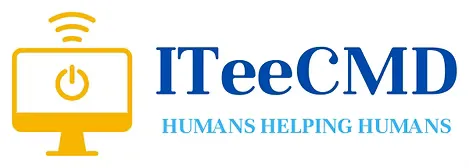Multiverse Podcast Chronicles

Cyber Insurance: Your Ultimate Protection Plan
Cyber Insurance: Your Ultimate Protection Plan
Cyber security is no longer an optional concern for business leaders. It's a critical necessity that requires ongoing attention and proactive measures. As threats continue to evolve, companies must be prepared with both robust security practices and proper insurance coverage. I believe that understanding the fundamentals of cyber security insurance and implementing comprehensive protection strategies are essential steps for any organization.
The landscape of digital threats has changed dramatically in recent years. Breaches aren't just possible—they're inevitable. When an incident occurs, having the right documentation, security protocols, and insurance coverage in place can make the difference between recovery and disaster. Many leaders mistakenly believe that simply checking compliance boxes or thinking their business is too small to be targeted will provide adequate protection. This dangerous misconception leaves organizations vulnerable and unprepared.
Key Takeaways
Cyber security requires ongoing vigilance and adaptation rather than one-time compliance efforts.
Proper documentation and implementation of security measures are essential for insurance coverage approval.
Effective leadership involves recognizing knowledge gaps and delegating cyber security responsibilities to qualified experts.
Understanding Cyber Security Protection
Key Coverage Elements
Cyber security insurance helps protect businesses from financial losses due to digital threats. This protection typically covers several important areas:
Data breach response
Network security incidents
Ransomware attacks and extortion
Recovery of lost data
Business interruption costs
Legal expenses and liability claims
Regulatory penalties
Third-party damages
Insurance providers don't just hand out coverage easily. They examine your security practices before approving claims. I've seen many cases where inadequate security led to denied claims. Remember that insurance is a complement to good security practices, not a replacement.
Value of Strong Security Measures
Cyber security isn't a one-time task - it's an ongoing process that demands constant attention. Simply checking boxes on a compliance form won't protect your business. Cyber criminals don't take days off, and neither should your security team.
To improve your chances of insurance coverage when incidents happen:
Adopt industry security standards
Implement recognized guidelines like HIPAA
Update your security regularly
Keep detailed records of your practices
Find and fix problems before they're exploited
I often hear business owners say, "This doesn't apply to me - I'm too small to be a target." This thinking is dangerous. If your systems connect to the internet or you handle any sensitive information, you face real risks.
Insurance adjusters will look closely at your security practices before paying claims. This review process can take weeks or months. Without proper security controls in place, you risk having your claim denied entirely.
The Ongoing Cyber Security Journey
Building Security Awareness Culture
Creating a strong security mindset across your organization isn't a one-time effort. I believe every employee must understand their role in protecting company data. This starts with regular training that goes beyond basic password rules.
Staff need practical knowledge about current threats like phishing and social engineering. I recommend using real-world examples in your training sessions to make the dangers concrete rather than abstract.
Leadership plays a critical role in this culture. When executives demonstrate commitment to security practices, employees follow suit. Consider these essential elements:
Regular training sessions (monthly or quarterly)
Security updates in company communications
Recognition for employees who report potential threats
Clear protocols for reporting suspicious activities
Always Improving Security Measures
The cyber threat landscape changes daily, requiring constant adaptation. What protected your company last year may not work today. I've found that effective security requires ongoing evaluation and updates.
Security improvements should include both technical solutions and procedural changes. This means regularly updating software, reviewing access controls, and testing your response plans.
Documentation is essential for this process. Keep detailed records of:
Documentation Type Purpose Update Frequency Security protocols Guide staff actions Quarterly Incident response plans Prepare for breaches Semi-annually Risk assessments Identify vulnerabilities Annually Training completion Track compliance Monthly
Regular security assessments help identify new vulnerabilities before they can be exploited.
Staying Alert Against Complacency
The biggest threat to security isn't always external—it's the false sense of safety that comes from checking boxes on compliance forms. I've seen organizations fall into this trap repeatedly.
Cyber criminals don't take days off, and neither should your security efforts. Remember that compliance doesn't equal security. Meeting minimum standards might help with regulations, but won't necessarily protect you from sophisticated attacks.
To avoid complacency:
Treat security as an ongoing process, not a completed task
Question assumptions about your security regularly
Test your defenses through simulated attacks
Keep learning about new threats and tactics
Never assume you're "secure enough"
Insurance companies conduct thorough evaluations before approving claims. Simply appearing compliant without actual security measures puts your coverage at serious risk.
Key Requirements for Cyber Protection Policies
Following Standard Industry Practices
To qualify for cyber insurance, you need to adopt recognized industry security practices. These aren't just checkboxes but essential protections. Strong passwords, regular updates, and employee training form the foundation. Insurance companies expect you to follow best practices that match your industry's standards.
I recommend implementing multi-factor authentication across all systems. This simple step can dramatically reduce unauthorized access attempts. Keep all software updated with security patches to protect against known vulnerabilities.
Your security measures must evolve as threats change. What worked last year may not protect you today. Stay informed about new security developments in your field.
Meeting Healthcare and Security Frameworks
If you handle sensitive data, especially in healthcare, you must follow HIPAA regulations and NIST 2.0 guidelines. These frameworks provide a roadmap for protecting information and systems.
HIPAA requirements include:
Patient data encryption
Access controls
Regular security assessments
Breach notification procedures
NIST 2.0 offers a structured approach to:
Identifying security risks
Protecting critical assets
Detecting threats
Responding to incidents
Recovering from breaches
Even if you're not in healthcare, these guidelines offer valuable security principles that insurance companies look for when assessing your readiness.
Keeping Records and Proving Compliance
Documentation is crucial for insurance coverage. You must maintain detailed records of:
Security policies and procedures
Risk assessments and audit results
Employee training programs
Incident response plans
System updates and patches
Previous security incidents and resolutions
Without proper documentation, insurance companies may deny claims even if you've taken security steps. Your records prove you've been following security protocols consistently, not just after a problem occurs.
Make sure your documentation is organized, accessible, and regularly updated. This helps both during the application process and if you need to file a claim.
Taking Control of Security Risks
Insurance companies favor businesses that actively manage their security risks. This means:
Conducting regular vulnerability scans
Testing your systems for weaknesses
Addressing issues before they become problems
Don't wait for problems to appear. Identify potential security gaps through regular assessments and fix them promptly. This proactive approach shows insurers you're serious about security.
I suggest creating a risk management plan that identifies your most valuable assets and the biggest threats they face. Prioritize your security efforts based on this assessment.
Understanding How Insurers Evaluate Your Security
Before approving coverage or paying claims, insurance companies thoroughly evaluate your security measures. This process can be intensive and may include:
Questionnaires about your security practices
Documentation reviews
Interviews with key staff
Technical assessments of your systems
Insurers look beyond surface-level compliance. They want to see that security is embedded in your operations. Be prepared for detailed questions about your security controls, incident response plans, and staff training.
The evaluation process can take weeks or months. Having your documentation ready and security measures in place speeds up this process and increases your chances of approval.
Address
2618 San Miguel Drive
Newport Beach, CA, 92660
Tel: 949-257-6998
Address
Newport Beach, CA, 92660
Tel: 949.257.6998
Follow Us
© 2025 all rights reserved. Created by Growth Generators. Privacy | SMS Disclosure.

